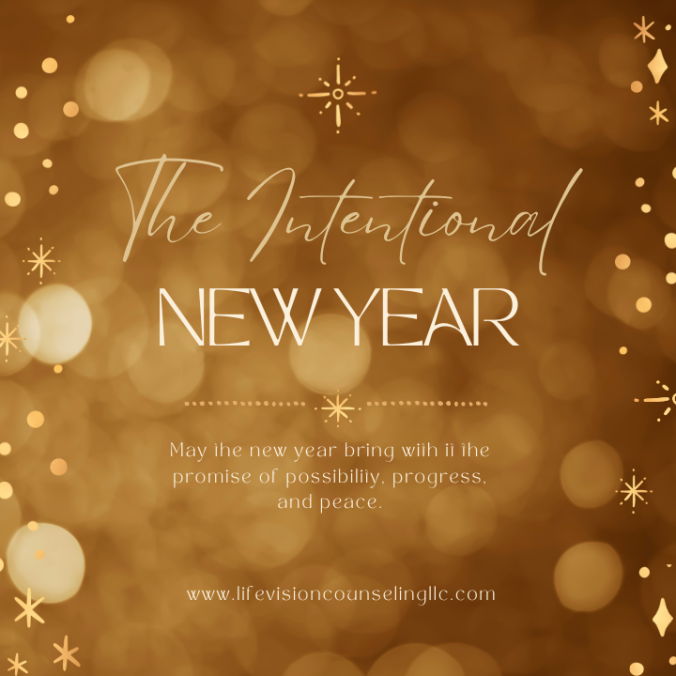Embracing A Fresh Start for Growth and Well-being
As the calendar turns to a new year, many of us reflect on the past and look ahead to what the future might bring. The New Year offers a sense of renewal, a chance to reset and reassess our goals, habits, and mental well-being. It’s a time when we can look at our lives with fresh eyes, seeking ways to grow, learn, and become the best version of ourselves.
While the tradition of New Year’s resolutions is popular, it’s important to approach this time not with pressure or perfectionism, but with mindfulness and compassion. New Year’s offers an opportunity to reflect, not just on what we want to change, but on how we want to feel, grow, and connect in the coming year.
Here are a few tips to help you embrace the New Year in a healthy, balanced way:
1. Practice Self-Compassion
Starting a new year often brings with it expectations and hopes for improvement. While it’s normal to want change, it’s also essential to be kind to yourself. If you didn’t meet all of your goals from last year, that’s okay. Life is full of setbacks and challenges. The key is to treat yourself with the same care and understanding that you would offer a close friend. Approach the year with patience, allowing yourself to evolve naturally rather than demanding instant transformations.
2. Set Intentions, Not Just Resolutions
While New Year’s resolutions tend to focus on specific goals, intentions are broader, more flexible guiding principles. Instead of simply aiming for a weight loss goal or a specific career achievement, set an intention to prioritize balance, well-being, or growth. Intentions help you remain open to the process of change, which is often more important than any final outcome.
For example, you might set an intention to “be more present” with your loved ones, or “embrace new learning opportunities.” These can guide your actions throughout the year, while also allowing room for unexpected growth.
3. Focus on Mental and Emotional Health
The New Year is a perfect time to refocus on your mental and emotional well-being. Stress, anxiety, and burnout are common struggles, but there are steps we can take to manage them better. Whether it’s starting a daily meditation practice, engaging in regular physical activity, or seeking support through therapy, taking care of your mental health should be a priority.
Remember that well-being is not just about feeling happy all the time, but about acknowledging your emotions and taking proactive steps to cope with them. Check in with yourself regularly about how you’re feeling, and take the time to nurture your emotional health.
4. Celebrate Small Wins
Oftentimes, we focus so much on the big milestones that we forget to celebrate the small victories along the way. Achieving goals, no matter how small they may seem, is a testament to your progress and resilience. Whether it’s maintaining a healthy routine for a week or having a meaningful conversation with someone, each step forward matters. Acknowledging these small successes can help build confidence and motivation to continue on your path.
5. Strengthen Connections
The New Year is a perfect time to strengthen your relationships with family, friends, and your community. Social connections play a key role in our overall well-being, and investing in these bonds can bring immense joy and support. Whether it’s reaching out to someone you haven’t spoken to in a while or planning more quality time with your loved ones, relationships are an essential part of feeling connected and fulfilled.
6. Accept the Impermanence of Life
Life is constantly changing, and so are we. The New Year reminds us that nothing is fixed, and that we have the power to shape our future through our choices. Rather than resisting change, embrace it. View this time as an opportunity to explore new paths, learn from your experiences, and grow from challenges. Trust in the process, knowing that each year brings its own lessons and possibilities.
7. Take Time to Rest
Finally, don’t forget the importance of rest and self-care. The New Year can be a time of excitement and action, but it’s equally important to honor your need for rest. In a world that often encourages constant productivity, taking time to recharge allows you to show up as your best self—physically, mentally, and emotionally. Prioritize sleep, engage in hobbies that bring you joy, and make space for moments of peace and relaxation.
The New Year is an opportunity to reflect, reset, and move forward with intention. By approaching it with kindness, patience, and a focus on well-being, you can make the most of this fresh start. Embrace the journey ahead, knowing that each day holds the potential for growth, connection, and fulfillment. I’m here to help if you’d like a partner in moving toward possibility, progress, and peace.

